Did you know that Togo, a small country in West Africa, is home to a remarkable wealth of biodiversity? It encompasses various ecosystems, including aquatic ecosystems, mangroves, and different types of forests. Togo is not only rich in terrestrial flora and aquatic species, but it also hosts several endemic amphibians and plants. However, this diverse and unique biodiversity is under threat from various factors, including ecosystem degradation and the lack of a monitoring system for fauna. Let’s delve into the fascinating world of Togo’s wildlife and explore the challenges it faces for conservation.
Key Takeaways:
- Togo is a biodiverse country with various ecosystems and endemic species.
- Ecosystem degradation and the absence of a monitoring system for fauna pose significant threats to Togo’s biodiversity.
- Conservation efforts are crucial to protect Togo’s unique flora and fauna and ensure sustainable development.
- Efforts are being made to achieve the Aichi Biodiversity Targets and preserve Togo’s natural resources.
- Togo’s biodiversity provides numerous benefits and plays a vital role in supporting local communities and the economy.
Togo’s Terrestrial Flora and Aquatic Species
Togo, a biodiverse country in West Africa, is home to a diverse range of terrestrial flora and aquatic species. With over 3,500 species of terrestrial flora described, Togo boasts a rich botanical heritage. From vibrant flowering plants to towering trees, the terrestrial flora of Togo adds color and beauty to its landscapes.
Additionally, Togo is known for its thriving aquatic ecosystems, which support a growing number of aquatic species. The number of aquatic species in Togo has increased to 501, showcasing the remarkable biodiversity found in its rivers, lakes, and wetlands.
“Togo’s terrestrial flora and aquatic species are a testament to the country’s ecological wealth and the importance of conservation efforts in preserving its natural heritage.”
Research on biodiversity in Togo has played a crucial role in uncovering new species, expanding knowledge about the country’s biodiversity, and highlighting the significance of ecosystem preservation. Through ongoing biodiversity research, scientists and conservationists continue to make groundbreaking discoveries, further enriching our understanding of Togo’s natural wonders.
The Beauty of Togo’s Terrestrial Flora
Togo’s terrestrial flora encompasses a wide variety of plants, including but not limited to:
- Flowering plants
- Tropical fruits
- Medicinal herbs
- Orchids
- Grasses and ferns
These plants contribute to the country’s ecosystems, provide habitat for wildlife, and play a vital role in sustaining local communities through their practical applications.
The Splendor of Togo’s Aquatic Species
Togo’s aquatic ecosystems are teeming with a diverse array of species, such as:
- Fish
- Amphibians
- Crustaceans
- Waterbirds
- Aquatic plants
These species thrive in Togo’s rivers, streams, and wetlands, forming intricate webs of life that contribute to the overall balance and health of the aquatic ecosystems.
The image above captures the vibrant beauty of Togo’s terrestrial flora and the tranquil allure of its aquatic species. It serves as a visual reminder of the biodiversity that Togo is blessed with and the need for its effective conservation.
Togo’s Animal Species
Togo is abundant in diverse animal species, with over 4,000 documented across its various ecosystems. This remarkable biodiversity includes mammals, birds, reptiles, amphibians, and insects, contributing to the country’s ecological richness. Extensive research conducted in Togo has not only aided in the identification of new species but also enhanced our understanding of the distribution and conservation status of existing ones.
Several animal species in Togo are classified as endangered and require urgent conservation efforts to protect their populations.
To raise awareness of Togo’s animal species and safeguard their existence, ongoing biodiversity research is conducted to monitor their populations, habitat conditions, and threats they face. This valuable research allows for the implementation of targeted conservation strategies, ensuring the preservation and sustainable management of Togo’s wildlife.
“The conservation of Togo’s animal species is crucial for maintaining the country’s biodiversity and securing a sustainable future.”
Togo’s commitment to biodiversity research and conservation initiatives fosters collaboration among scientists, local communities, and international organizations. Together, they work towards the common goal of protecting and restoring Togo’s natural heritage.
Togo’s Endangered Animal Species
The conservation efforts in Togo are specifically focused on safeguarding endangered animal species. These species are at high risk of extinction if immediate action is not taken. Some of Togo’s endangered animal species include:
- The Togo Slippery Frog (Conraua derooi): endemic to Togo, this critically endangered amphibian is threatened by habitat loss and degradation due to deforestation.
- The Togo Olive Colobus (Procolobus verus): a vulnerable primate species found in Togo’s forests, facing habitat destruction and poaching as significant threats to its survival.
- The Togo Sunbird (Nectarinia togoensis): an endangered bird species endemic to Togo, suffering from habitat loss and degradation caused by deforestation and agricultural expansion.
Conservation efforts strive to protect these species and their habitats through the establishment of protected areas, habitat restoration, community engagement, and raising public awareness about the importance of biodiversity conservation.
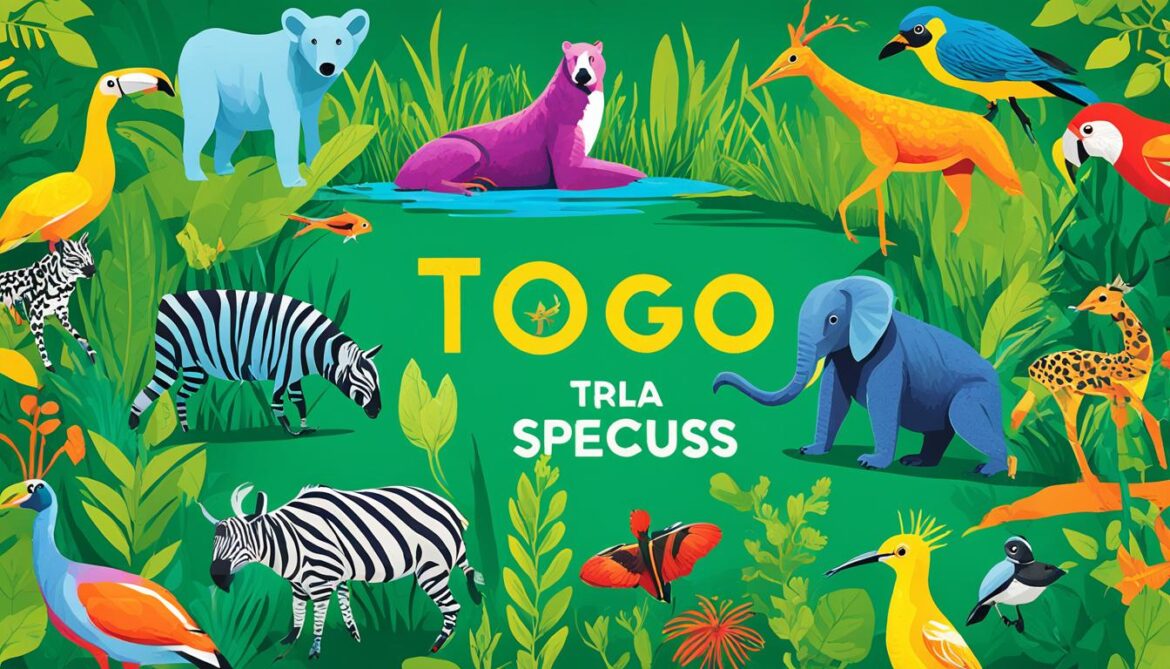
| Animal Group |
Number of Documented Species |
| Mammals |
480 |
| Birds |
780 |
| Reptiles |
160 |
| Amphibians |
90 |
| Insects |
2,490 |
Forest Fragmentation and Land Use Changes
Land use analyses in Togo have revealed significant changes in forest cover, particularly in the northern region of the country. The expansion of agriculture has resulted in the fragmentation of wooded savannah and the clearance of forest areas, leading to Togo forest fragmentation and Togo land use changes.
These land use changes have had a profound impact on biodiversity in Togo, disrupting habitats and posing a threat to the survival of numerous species. Fragmented forests provide fewer resources and limited connectivity, making it difficult for wildlife to move and reproduce. This results in reduced gene flow and increased vulnerability to local extinction.
The loss of forest cover also contributes to Togo biodiversity impact by reducing the availability of food, shelter, and nesting sites for many species. Birds, mammals, insects, and reptiles that depend on the forest for survival are particularly affected. The destruction of habitats can lead to the displacement and decline of these species, further exacerbating the challenges faced by Togo’s biodiversity.
Land use changes, such as deforestation, have a direct and detrimental effect on biodiversity in Togo. The clearing of land for agriculture and other human activities disrupts the delicate balance of ecosystems, causing irreparable harm to plants, animals, and the overall health of the environment.
The Impact of Togo Forest Fragmentation
Forest fragmentation in Togo has extensive consequences for its biodiversity. The isolation of individual forest patches limits the movement of species, impeding their ability to find mates, access resources, and colonize new areas. This isolation also makes them more susceptible to factors such as climate change, disease, and natural disasters.
Fragmented forests in Togo also experience edge effects, where disturbances and changes occur at the boundaries of the forest. These edge effects can alter microclimatic conditions, increase humidity levels, and expose species to increased predation and competition with invasive species.
| Dire Consequences of Togo Forest Fragmentation |
|
| Loss of species diversity |
Fragmented forests support fewer species and reduce genetic diversity, leading to imbalanced ecosystems and potential species extinctions. |
| Disrupted ecological processes |
The fragmentation of forests hinders crucial ecological processes such as pollination, seed dispersal, and nutrient cycling, disrupting the functioning of ecosystems. |
| Invasive species invasion |
Fragmented forests are more susceptible to invasive plant and animal species, which outcompete native species and further degrade the ecosystem. |
| Increased vulnerability to climate change |
Fragmented forests have reduced resilience to climate change, with species unable to migrate or adapt to new conditions, putting them at greater risk of extinction. |
The consequences of forest fragmentation and land use changes in Togo highlight the urgent need for sustainable land management practices, conservation efforts, and policies that prioritize the protection and restoration of forest ecosystems. These measures are essential to safeguard Togo’s biodiversity and ensure the long-term viability of its ecosystems.
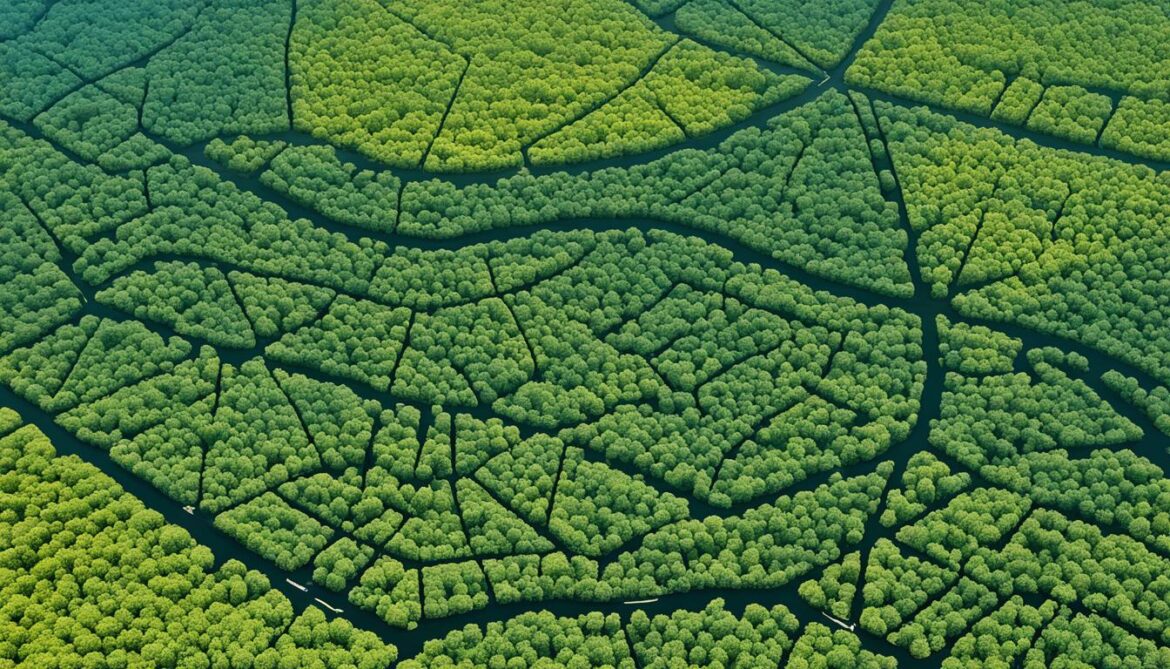
Benefits of Togo’s Biodiversity
Togo’s biodiversity provides numerous benefits to its people. The rich variety of flora and fauna in the country contributes to the well-being and livelihoods of the local population in various ways.
First and foremost, Togo’s biodiversity offers a wide range of food products, ensuring food security and nutrition for the people. Indigenous crops and wild edibles contribute to a diverse and nutritious diet.
Beyond food, Togo’s biodiversity is a valuable source of raw materials for industry. The country’s forests provide timber for construction and furniture, while medicinal plants and herbs are used in traditional pharmacopeia, contributing to the well-known indigenous knowledge of Togolese healers.
The unique flora and fauna of Togo also hold sociocultural significance. Many plants are used in traditional rites and ceremonies, connecting communities to their cultural heritage. Additionally, certain plant species are utilized in the production of cosmetics, offering opportunities for the local beauty industry.
The cool forested areas in Togo are not only essential for maintaining biodiversity but also serve as popular attractions for both locals and tourists. Forest reserves, national parks, and other protected areas offer opportunities for ecotourism, showcasing the country’s natural beauty and contributing to the local economy.
Furthermore, Togo’s biodiversity plays a crucial role in supporting agricultural production. Ecosystem services provided by biodiversity, such as pollination and soil fertility, contribute to crop productivity and overall agricultural sustainability.
Lastly, biodiversity conservation efforts in Togo create employment opportunities through forest management activities. Sustainable forest practices, such as sustainable logging and agroforestry, provide jobs for local communities, contributing to poverty alleviation and socio-economic development.

In summary, Togo’s biodiversity offers a wide range of benefits to its people, including food security, raw materials, traditional pharmacopeia, sociocultural rites, and opportunities for tourism and employment. Preserving and sustainably managing Togo’s rich biodiversity is not only essential for the country’s socio-economic development but also crucial for maintaining the integrity of its ecosystems for future generations.
Main Threats to Togo’s Biodiversity
The biodiversity of Togo is facing significant threats that pose a danger to the delicate balance of ecosystems and the survival of numerous species. These threats include:
Ecosystem Degradation
Ecosystem degradation, caused by activities such as deforestation, land conversion, and pollution, is a major threat to Togo’s biodiversity. The destruction and fragmentation of habitats disrupt the interconnected web of life, leading to the loss of species and the decline of ecosystem services.
Invasive Species
The introduction of invasive species is another pressing threat to Togo’s biodiversity. These non-native plants and animals often outcompete native species for resources, leading to their displacement or extinction. Invasive species can also disrupt ecosystem processes and threaten the overall health and functioning of ecosystems.
Overexploitation of Plant Resources
Unsustainable harvesting of plant resources, such as timber, medicinal plants, and non-timber forest products, is a significant threat to Togo’s biodiversity. Overexploitation can deplete populations, disrupt ecological interactions, and negatively impact the resilience and ecological integrity of ecosystems.
Poaching
Poaching, particularly for bushmeat and the illegal wildlife trade, poses a serious threat to Togo’s biodiversity. The hunting and trafficking of endangered species, such as elephants and pangolins, not only decimate their populations but also disrupt crucial ecological roles and destabilize entire ecosystems.
Absence of Fauna Monitoring System
The absence of a comprehensive monitoring system for fauna in Togo hinders effective conservation efforts. Without accurate data on species populations, distribution, and threats, it becomes challenging to implement targeted conservation strategies and allocate resources to protect vulnerable species and ecosystems.
Image related to Togo biodiversity threats:

Efforts must be made to address these threats and safeguard the rich biodiversity of Togo. Conservation measures, sustainable land management, stringent regulations, and the involvement of local communities are essential in protecting and preserving the natural heritage of the country.
Togo’s National Biodiversity Strategy and Action Plan
Togo recognizes the importance of biodiversity conservation and sustainable use. In 2003, the country developed its first National Biodiversity Strategy and Action Plan (NBSAP) to address the key challenges it faces in this regard. The NBSAP aims to protect and preserve Togo’s unique biodiversity, while also promoting sustainable development. However, the implementation of the NBSAP has been hindered by various constraints.
The main obstacles include financial limitations, human resource constraints, and technical challenges. Additionally, there has been a lack of adequate consideration of biodiversity in the country’s development policies. Despite these challenges, Togo remains committed to biodiversity conservation and is continuously working towards revising and improving its NBSAP.
Efforts are currently underway to revise the NBSAP and align it with the Aichi Biodiversity Targets. The Aichi Targets were adopted as part of the Strategic Plan for Biodiversity 2011-2020, by the Parties to the Convention on Biological Diversity, and provide a framework for global action on biodiversity. By aligning its NBSAP with the Aichi Targets, Togo aims to enhance its biodiversity conservation efforts and contribute to global biodiversity goals.
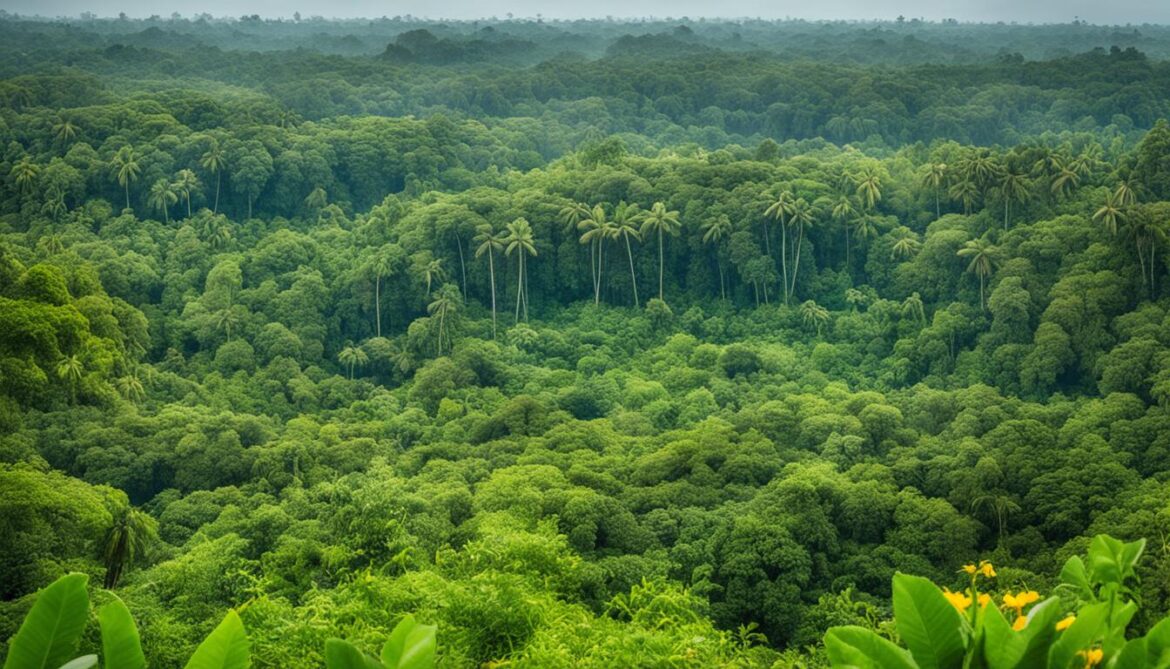
Togo’s revised NBSAP will prioritize key areas such as habitat conservation, species protection, sustainable land use, and community involvement. It will also emphasize the importance of integrating biodiversity considerations into development planning at all levels.
The revised NBSAP will play a crucial role in ensuring the long-term protection and sustainable management of Togo’s rich biodiversity. It will guide the country in implementing practical actions to conserve its ecosystems, protect endangered species, and promote sustainable use of natural resources.
By strengthening its National Biodiversity Strategy and Action Plan, Togo is taking significant steps towards safeguarding its unique biodiversity for future generations. The revised plan will provide a solid foundation for effective biodiversity conservation and sustainable development in the country.
| Benefits of the Revised NBSAP |
Actions to be Taken |
| Enhanced habitat conservation |
Establishment and management of protected areas |
| Protection of endangered species |
Implementation of targeted conservation programs |
| Sustainable land use practices |
Promotion of agroforestry and sustainable agriculture |
| Community involvement |
Engagement of local communities in biodiversity conservation activities |
Actions for Achieving the Aichi Biodiversity Targets in Togo
Togo is committed to achieving the Aichi Biodiversity Targets and has implemented several initiatives to conserve its rich biodiversity and promote sustainable development.
International Fair on Biodiversity
Togo organized an international fair on biodiversity to raise awareness about the value of its unique flora and fauna. The fair showcased Togo’s biodiversity initiatives, research findings, and conservation efforts. It provided a platform for stakeholders, experts, and the public to exchange knowledge and strategies for biodiversity conservation and sustainable use.
Creation and Management of Forest Communities
Togo has recognized the importance of community involvement in biodiversity conservation. The country has established forest communities, empowering local communities to actively participate in managing and protecting forest resources. This approach not only contributes to biodiversity conservation but also improves the livelihoods of local communities by promoting sustainable forest management practices.
National Agricultural Development Policy
The National Agricultural Development Policy in Togo incorporates biodiversity conservation and sustainable use. It promotes agroecological practices that minimize environmental impacts and preserve biodiversity. By integrating biodiversity considerations into agriculture, Togo aims to ensure the long-term sustainability of its agricultural sector while protecting and enhancing biodiversity.
Participation in the Forest Carbon Partnership Facility
Togo actively participates in the Forest Carbon Partnership Facility (FCPF), a global initiative that supports countries in their efforts to reduce deforestation and forest degradation. Togo’s participation in FCPF demonstrates its commitment to sustainable forest management and the conservation of its forest ecosystems. Through the FCPF, Togo receives technical and financial support to develop and implement forest conservation projects.
These initiatives highlight Togo’s dedication to achieving the Aichi Biodiversity Targets and its commitment to preserving its unique ecosystems, while also improving the lives of its communities.
| Initiative |
Description |
| International Fair on Biodiversity |
Raised awareness about Togo’s biodiversity and fostered knowledge exchange |
| Creation and Management of Forest Communities |
Empowered local communities to participate in forest resource management |
| National Agricultural Development Policy |
Integrated biodiversity conservation into agricultural practices |
| Participation in the Forest Carbon Partnership Facility |
Received support to develop and implement forest conservation projects |
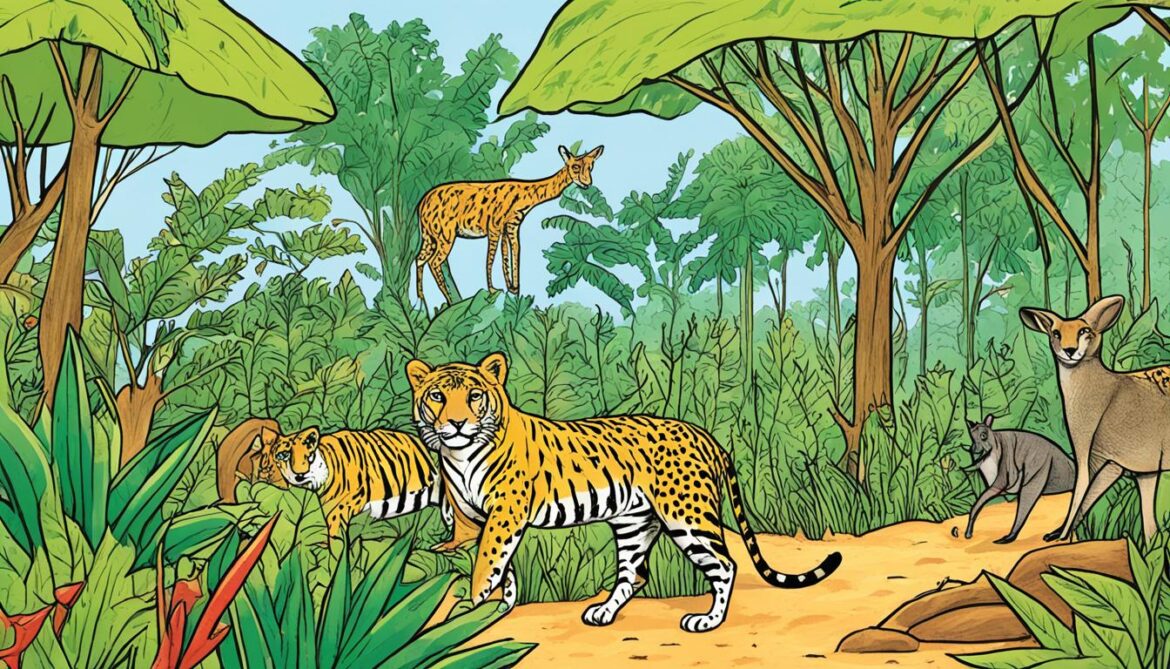
Togo’s Environmental Legislation and Institutions
Togo recognizes the importance of protecting its rich biodiversity and has implemented various environmental legislation and institutions to support conservation efforts and ensure sustainable use of natural resources. These measures aim to safeguard the country’s unique ecosystems and promote environmentally responsible practices.
One significant step Togo has taken is the adoption of forest policies that outline guidelines for sustainable forestry practices. These policies not only help prevent deforestation but also encourage responsible management of forest resources to preserve biodiversity and mitigate climate change.
To provide strategic oversight and coordination of environmental management, Togo has established the National Commission on Sustainable Development. This commission plays a crucial role in developing policies and strategies that promote sustainable development practices, including biodiversity conservation.
An essential institution in Togo’s environmental management framework is the National Agency for Environmental Management. This agency is responsible for implementing environmental policies, conducting research, and monitoring the impact of human activities on the environment. Its efforts contribute to the identification of key conservation areas and the development of management plans to ensure the sustainable use of natural resources.
Togo has also been proactive in integrating biodiversity conservation into its development strategies. By considering the environmental implications of various sectors, such as agriculture, infrastructure, and tourism, Togo aims to balance economic growth and environmental sustainability.
In addition to environmental legislation and institutions, Togo emphasizes the promotion of sustainable land use practices. By encouraging responsible agricultural practices, reforestation initiatives, and the establishment of protected areas, Togo strives to safeguard its biodiversity and mitigate the threats posed by habitat degradation, invasive species, and overexploitation.
Overall, Togo’s environmental legislation and institutions play a critical role in ensuring the conservation of its diverse ecosystems and promoting sustainable development. Through robust governance, strategic planning, and active engagement with stakeholders, Togo is working towards a harmonious balance between environmental conservation and socio-economic progress.
| Institution |
Mandate |
| National Commission on Sustainable Development |
Overseeing and coordinating environmental management, developing sustainable development policies |
| National Agency for Environmental Management |
Implementing environmental policies, conducting research, monitoring environmental impact |
Challenges and Monitoring of Biodiversity Implementation in Togo
Togo faces various challenges in implementing biodiversity conservation measures. These challenges include financial constraints, limited human resources, technical limitations, weak coordination, and a lack of defined responsibilities. These factors hinder the effective management and preservation of Togo’s diverse flora and fauna.
“The conservation and sustainable use of biodiversity require strong collaboration, adequate funding, and well-defined roles and responsibilities,” says Dr. Samuel Akakpo, a prominent conservation scientist in Togo. “Without proper coordination and clear guidelines, it is challenging to implement effective conservation strategies.”
One critical issue in Togo’s biodiversity conservation efforts is the absence of a comprehensive monitoring system. Monitoring plays a pivotal role in assessing the effectiveness of conservation measures and identifying areas that require improvement. Without an efficient monitoring mechanism, it becomes difficult to evaluate the progress made and make informed decisions.
The Need for Biodiversity Monitoring
A robust biodiversity monitoring system enables Togo to:
- Evaluate the status of threatened species and habitats
- Assess the impact of human activities on biodiversity
- Track trends and changes in species populations
- Identify early warning signs of ecosystem degradation
- Measure the effectiveness of conservation interventions
Establishing a comprehensive monitoring framework would provide essential data for evidence-based decision-making and help prioritize conservation efforts in Togo.
Despite the challenges, initiatives are underway to improve biodiversity monitoring in the country. International organizations, research institutions, and local communities are collaborating to develop monitoring protocols, build capacity, and raise awareness about the importance of monitoring for biodiversity conservation.
| Challenges in Biodiversity Implementation |
Solutions and Actions |
| Financial constraints |
Seeking international funding, promoting sustainable financing mechanisms |
| Limited human resources |
Investing in training and capacity building, engaging local communities |
| Technical limitations |
Collaborating with scientific institutions and experts, adopting innovative technologies |
| Weak coordination |
Establishing interagency collaboration, developing clear guidelines and responsibilities |
| Lack of defined responsibilities |
Clarifying roles and responsibilities of relevant stakeholders, fostering institutional partnerships |
Overcoming these challenges and strengthening biodiversity monitoring in Togo is crucial for the successful implementation of conservation measures.
Conclusion
Togo is a biodiverse country with diverse ecosystems and a rich variety of flora and fauna. The country’s terrestrial flora comprises over 3,500 species, while its aquatic ecosystems are home to 501 species. Togo also boasts a wide array of animal species, with over 4,000 documented, including mammals, birds, reptiles, amphibians, and insects.
However, Togo’s biodiversity is facing significant threats, including habitat degradation, invasive species, overexploitation of resources, and poaching. These factors have a detrimental impact on the survival of many species and the overall health of ecosystems in the country.
Efforts are being made to enhance biodiversity conservation and achieve the Aichi Biodiversity Targets. Togo has developed a National Biodiversity Strategy and Action Plan (NBSAP) to address key challenges in biodiversity conservation and sustainable use. Initiatives such as forest management, the National Agricultural Development Policy, and participation in the Forest Carbon Partnership Facility contribute to the conservation of Togo’s biodiversity while promoting sustainable development and improving local livelihoods.
However, challenges remain in effectively implementing and monitoring biodiversity conservation measures. Financial, human, and technical constraints, as well as weak coordination and lack of defined responsibilities, pose obstacles to the successful preservation of Togo’s biodiversity.
Protecting Togo’s biodiversity is crucial for the well-being of its people and the sustainable development of the country. By preserving diverse ecosystems and safeguarding endangered species, Togo can ensure the long-term health of its natural resources and contribute to global efforts in biodiversity conservation.
| Key Points |
Actions |
| Biodiversity threats |
– Habitat degradation
– Invasive species
– Overexploitation of resources
– Poaching |
| Efforts for conservation |
– National Biodiversity Strategy and Action Plan (NBSAP)
– Forest management
– National Agricultural Development Policy
– Participation in the Forest Carbon Partnership Facility |
| Implementation and monitoring challenges |
– Financial, human, and technical constraints
– Weak coordination and lack of defined responsibilities |
References
1. Togo National Biodiversity Strategy and Action Plan. Retrieved from https://www.cbd.int/doc/world/tg/tg-nbsap-v1-en.pdf
2. Togo’s Ministry of Environment and Forest Resources. Retrieved from http://www.environnement.gouv.tg
3. Togo Biodiversity Information System. Retrieved from https://www.togobiodiv.org
4. Togo Wildlife and Plant Conservation Society. Retrieved from http://www.togowpcs.org
FAQ
What is Togo’s biodiversity like?
Togo is a small country in West Africa that is rich in biodiversity. It encompasses various ecosystems and is home to a diverse range of animal and plant species.
What are the main threats to Togo’s biodiversity?
The main threats to Togo’s biodiversity include ecosystem degradation, the introduction of invasive species, overexploitation of plant resources, poaching, and the absence of a monitoring system for fauna.
What are the benefits of Togo’s biodiversity?
Togo’s biodiversity provides numerous benefits, including food products, raw materials for industry, building materials, and plants used in traditional pharmacopeia, sociocultural rites, and cosmetics. Biodiversity also supports agricultural production and provides employment opportunities through forest management activities.
What actions has Togo taken to achieve the Aichi Biodiversity Targets?
Togo has taken several actions, such as organizing an international fair on biodiversity, creating and managing forest communities, implementing the National Agricultural Development Policy, and participating in the Forest Carbon Partnership Facility.
What challenges does Togo face in implementing biodiversity conservation measures?
Togo faces various challenges, including financial, human, and technical constraints, as well as weak coordination and lack of defined responsibilities. Additionally, there is currently no comprehensive mechanism for monitoring and reviewing the implementation of biodiversity measures in the country.
What is Togo doing to protect its biodiversity?
Togo has established environmental legislation and institutions to support biodiversity conservation and sustainable use. Efforts have been made to integrate biodiversity conservation into development strategies and promote sustainable land use practices.
Where can I find more information on Togo’s biodiversity?
For more information on Togo’s biodiversity, you can refer to the references and sources provided in the References section.
Source Links






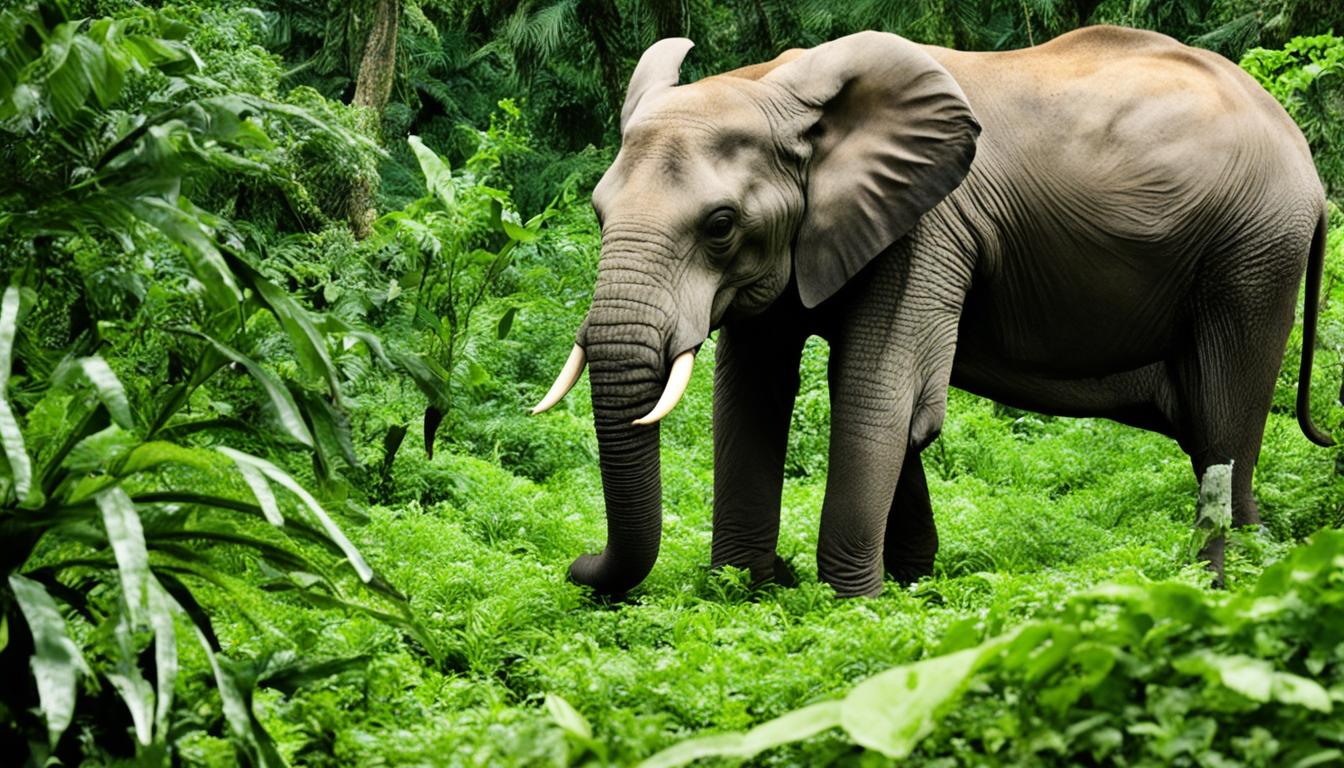






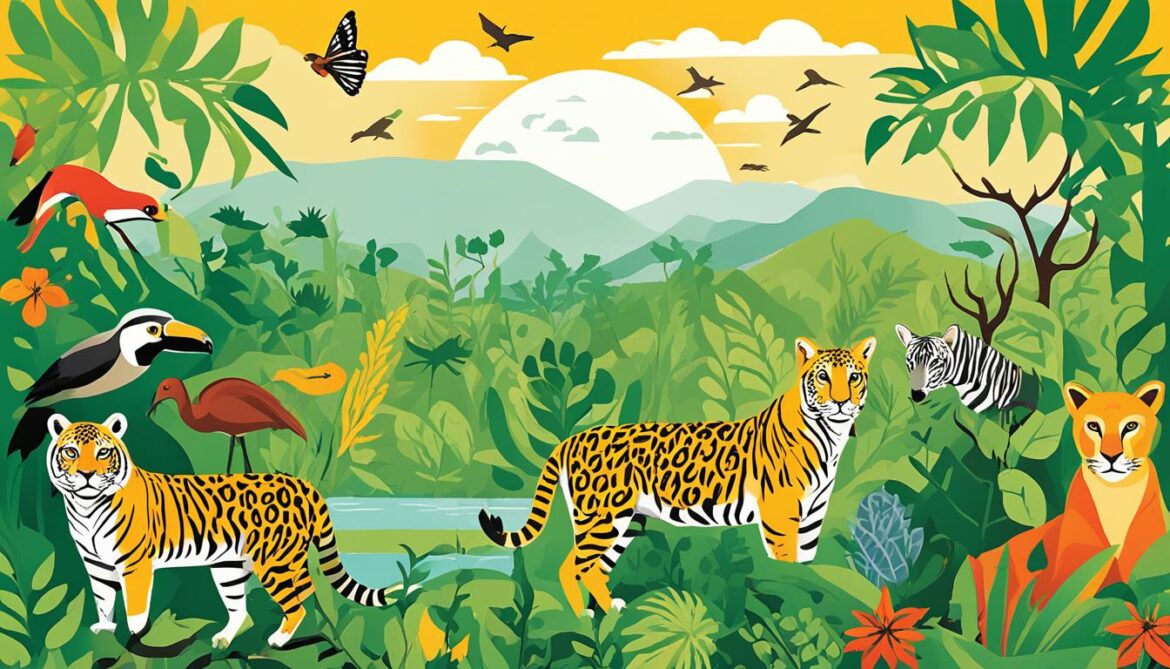











Post comments (0)